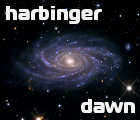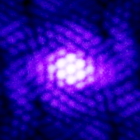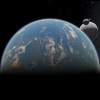|
Gas giant question
|
|
| xhar2 | Date: Monday, 15.09.2014, 19:11 | Message # 1 |
|
Observer
Group: Newbies
 United Kingdom
United Kingdom
Messages: 4
Status: Offline
| I noticed on one of the gas giants generated that it has a diameter of 142276 KM and a mass 11.252 jupiters, and a density of 14.283 g/cm3. can this even be right? the gas giant has the density of mercury (the element not the planet).
Would it be a weird in game result? or can it be realistic (im very doubtful)
|
| |
| |
| HarbingerDawn | Date: Monday, 15.09.2014, 19:34 | Message # 2 |
 Cosmic Curator
Group: Administrators
 United States
United States
Messages: 8717
Status: Offline
| It is realistic. After reaching a certain size, gas giants are prevented from growing larger in physical dimensions due to their own mass, so they just get increasingly dense as their mass increases, with little change in size. The exception being very hot planets, such as those close to their stars, or very young planets, which will be bloated due to thermal expansion.
Also, please read the forum rules. A new thread for this question was entirely unnecessary.
All forum users, please read this!
My SE mods and addons
Phenom II X6 1090T 3.2 GHz, 16 GB DDR3 RAM, GTX 970 3584 MB VRAM
|
| |
| |
| xhar2 | Date: Monday, 15.09.2014, 19:44 | Message # 3 |
|
Observer
Group: Newbies
 United Kingdom
United Kingdom
Messages: 4
Status: Offline
| Oh im sorry about the rules, its my first post and wasn't to sure were to post it. but great its cool to know its realistic, but would you know where I could find more information about gas giant size limits or an example of such a massive planet?
|
| |
| |
|
| Watsisname | Date: Tuesday, 16.09.2014, 17:26 | Message # 5 |
 Galaxy Architect
Group: Global Moderators
 United States
United States
Messages: 2613
Status: Offline
| HarbingerDawn is spot on. As planet mass increases (especially above ~100 Earth Masses), you start noticing a decrease in the rate at which size increases, because the gravity compresses them. This increases the density even if composition is the same. Above ~1000 Earth masses, the size actually decreases as mass increases. (Same thing also happens to white dwarfs. Add more matter to one, and it gets smaller!)
SpaceEngine uses realistic formulas for generating planets, so unless something is seriously wrong you should never see implausible planet densities. Indeed as seen from Harb's links, COROT-3b has almost twice the density of the planet you found. 

|
| |
| |
| SpaceEngineer | Date: Wednesday, 17.09.2014, 08:52 | Message # 6 |
 Author of Space Engine
Group: Administrators
 Russian Federation
Russian Federation
Messages: 4800
Status: Offline
| The great example is Uranus and Neptune. Neptune is slightly heavier than Uranus (17 vs 14 Earth masses), while its size is slightly smaller.

|
| |
| |